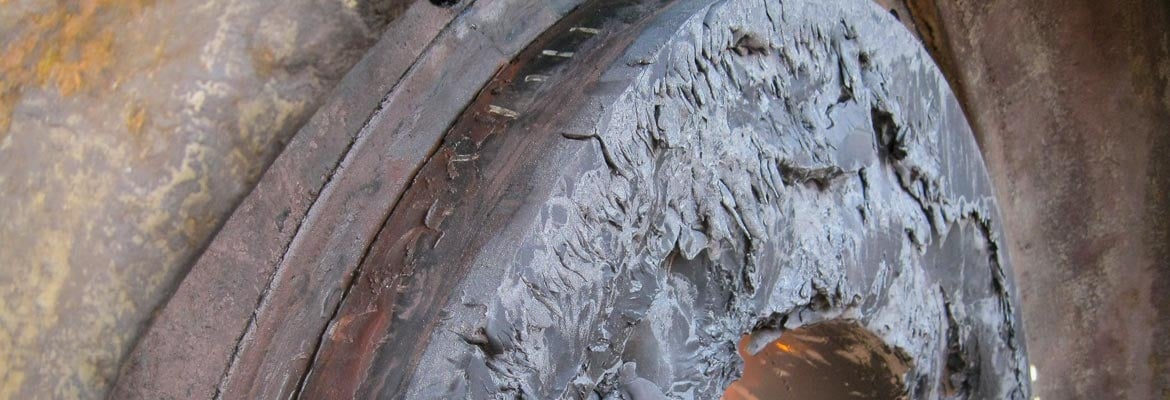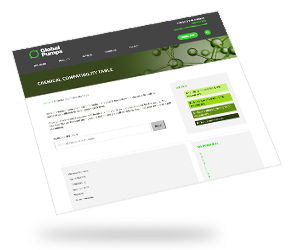Global Pumps have been working with manufacturers in the chemical industry for over 45 years, providing advice and products that suit the harsh and corrosive nature of their products.
To ensure the pump you have selected is suitable for use with harsh products, chemical compatibility is critical. Global Pumps describe exactly what this means and how you can check if your pump is safe!

What is chemical compatibility?
Chemical compatibility is the resistance of exposed metals to corrosion and of thermoplastics and elastomers to chemical damage. Effects can include softening or swelling of the materials. The effects can vary widely depending on the temperature, the presence of abrasives, impurities or entrained gases.
It is important you understand how all exposed materials (including seals and shaft components) interact with the pumped fluid. This reaction is referred to as chemical compatibility.
How can my pump corrode?
If the metallic components of the pump are not resistant to the fluid being pumped, the speed that corrosion occurs will increase and deteriorate the parts quickly. Pumps can experience corrosion from a wide range of causes. The following are references based on what occurs to the pump's surface.
Uniform corrosion: This is consistent and constant deterioration over the entire surface of the exposed metal component. This form of corrosion is predictable, so the operational lifetime of the component can be estimated from test results or standard corrosion charts. It can be minimised by coating surfaces with a protective layer, or by installing a pump constructed from resistant materials.
Galvanic corrosion: This occurs when there is a combination of different bare metal surfaces when in the presence of acid or alkali. In order to avoid galvanic corrosion, it is important you assess the materials used within the pumping system, including valves, piping and pump components.
Pitting corrosion: This is referred to as a localised effect and follows damage to a protective surface layer. Once this layer is exposed, the metal underneath begins to corrode leaving irregular pits with sharp edges. If the fluid contains abrasives and is pumped at high flow rates, it can be a problem for components.
Stress corrosion: This type of corrosion is a localised effect which is brought on by stresses in a component. A combination of mechanical stress and corrosion can lead to the pump fracturing.
Intergranular corrosion: This involves the degradation of metal around grain boundaries. It is more commonly found to occur in stainless steel pump castings or around welds.
Crevice corrosion: This may arise due to stagnant pools of fluid retained in confined areas - for example around flanges. It is particularly problematic when pumps are used intermittently.
Microbiologically influenced corrosion: Is a problem with pumps handling untreated water. Some bacteria can induce or promote corrosion.
How are pumps protected from harsh chemicals?
A pump's components, which includes shafts, sleeves, plungers, piston rods, impellers and containment shells are coated, or made, in a metallic, non-metallic or ceramic compound. This ensures the pump is compatible with different chemicals and is corrosion resistant.
How do I ensure my pump and components are chemically compatible?
Chemical compatibility charts describe the resistance of materials used in pump construction to various chemicals commonly pumped. It is critical you refer to these charts when selecting your pump. This will ensure all wetted parts are chemically compatible with, and resistant to, the pumped media.
As each manufacturer publishes their own chemical compatibility chart, it is critical that you consider this during the selection process. Whether you are working with a pump selector, or choosing your own, you should always refer to the material and information provided by the pump manufacturer to ensure the pump is suitable for the application.

Most pumps have several different parts, constructed from different materials, that will come into contact with the media. Therefore, you will need to check the chemical compatibility with each of these materials.
Global Pumps have a useful chemical compatibility chart. Access it here.
Have more questions about chemical compatibility?
Want to learn more about chemical compatibility? Or maybe you’re in the process of selecting a new pump, and are pumping corrosive chemicals? For expert advice, chat with the Global Pumps team!

